Last Chance to Catch NYC's Holiday Notalgia Train
We met the voices of the NYC subway on our nostalgia ride this weekend!


In the 2000s, I left a Burberry purse in the Penn Station waiting room bathroom and when I arrived at the Ronkonkoma train station, a voice came over the loudspeakers from the ticket office requesting that I come to the booth. The lost item was recovered, I was told, and would be at Penn Station to be picked up. I recounted this story to Long Island Railroad Terminal Manager Steve Terracciano who says that New Yorkers really are actually nice, based on the items he’s seen get turned into the Lost & Found in the twelve years he’s been with the railroad.
On Monday, a new Lost & Found opened at Penn Station and we went to visit with Terracciano and his team to see what gets left behind from the mundane to the bizarre. 750,000 people go through Penn Station every day. Now, imagine the number of items that get lost or displaced over a given day not only in the station, but also on the trains throughout the system. About 20,000 lost items make their way to the Lost & Found each year. These days with insurance, a lot of cell phones, which is the most common item lost, just get abandoned, but the railroad manages to return an average of 55% of the lost items through organization, persistence, and old fashioned detective work.
The Lost & Found was previously in the main hallway of the Long Island Railroad, under the escalators. It wasn’t the most obvious of locations and the long narrow space it occupied was not very conducive to sorting and customer service. The new Lost & Found is located in the “Exit Corridor” of Penn Station — the last corridor before the A/C/E trains across from the Starbucks — between tracks 16 and 17.
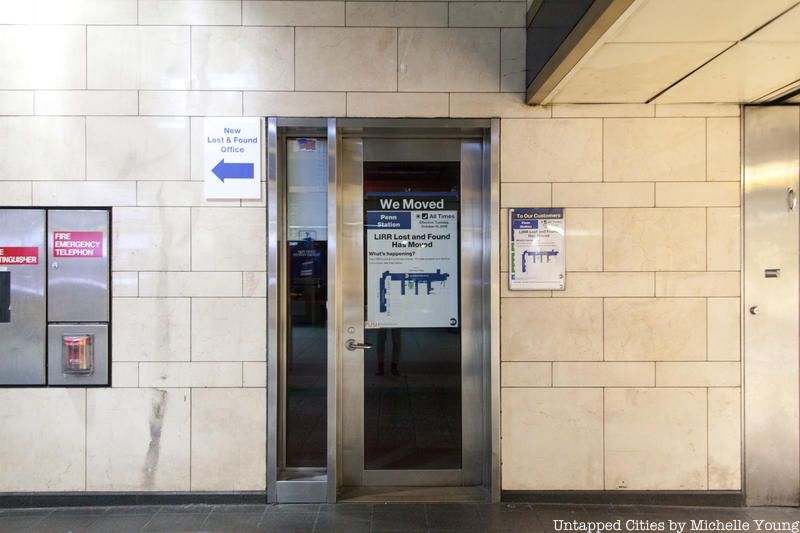
Old Lost & Found
Inside, there’s a wide, ADA accessible waiting room where you can use tablets to report your lost item (same form that’s available online) and a customer window where you can speak to one of the Lost & Found agents, whom we’re happy to report are helpful, polite, and dedicated to the cause of reuniting transit goers with their lost belongings. They get to see a unique side of the station’s operations, interfacing with internal operations and the public. As such, jokes Terracciano, they serve as part-therapists for those who are understandably frazzled because they’ve lost something. With the new, more visible location, they’re also serving as general customer service agents, as travelers come in with questions about tracks and train times. About 350 to 400 people come into the Lost & Found every day, and on our visit, a steady stream of visitors came in and out.
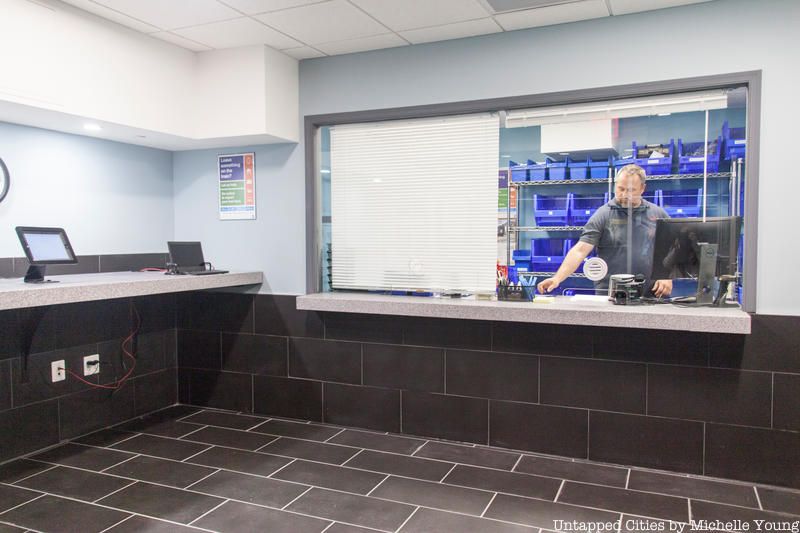
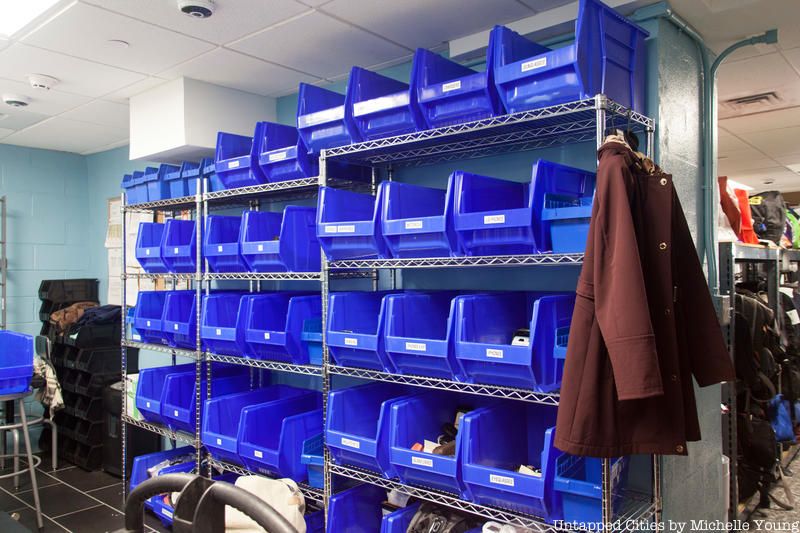
“There is nothing more gratifying,” says Terracciano, “than reuniting a customer with their lost items. No matter how mundane an item may appear, it has a story and and sentimentality to its owner. The staff of the Lost and Found needs to be more than just a clerk, they need to be an empathetic ear and detective as well.” He recounted the story of a leather members-only jacket that someone had lost in Penn Station. It wasn’t in great shape, but it had belonged to the man’s father-in-law. “Everything means something to somebody,” Terracciano muses.
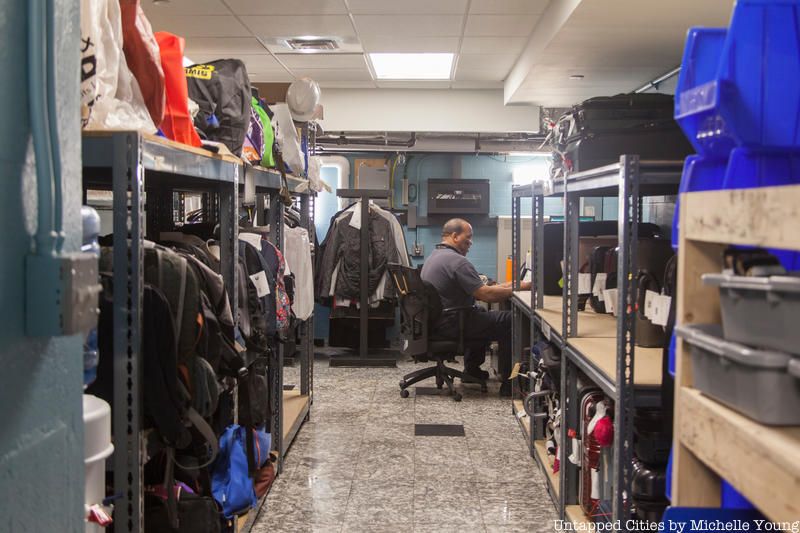
The new Lost & Found is 1,100 square feet, just a hundred square feet more than the old one but in a much more conducive layout, which allows for multiple rows of items and space to circulate within. You can only access the back room by keycard. Each item gets a bar code so nothing gets misplaced and everything is logged in the system. The most frequent items that are brought in are cell phones, wallets and keys. High value items are kept in a locked cage, which included a good number of construction tools.
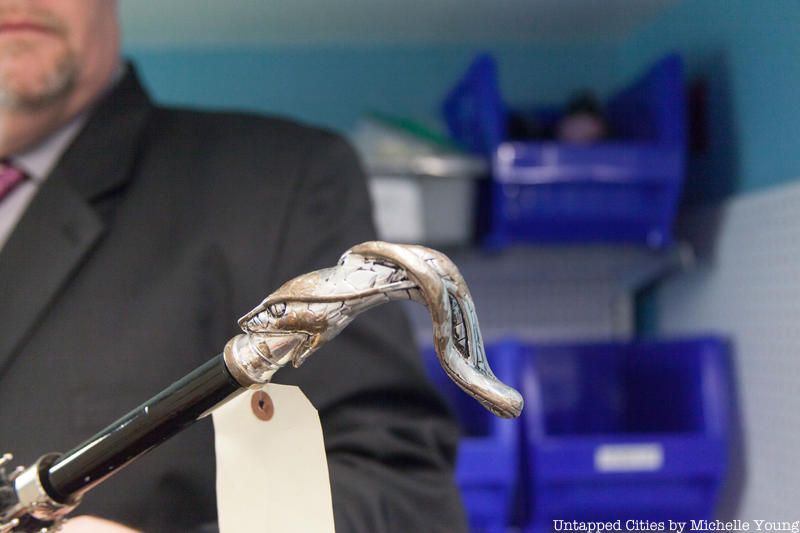
The chainsaw that was there earlier this week had sadly already been disposed of and taken apart (anything that could be a weapon can’t be kept around). The violin that was there earlier this week was also claimed, but a flute was still there. As was an umbrella with a silver serpent handle, platform “Lady Gaga”-like holographic sneakers, black Nike AIR Jordans, a Revel scooter helmet likely stolen (since the scooter rideshare service only runs in Brooklyn and Queens, but we were excited to inform the staff what Revel was for their sleuthing), a jewelry box, and much more. Some of the stranger things that have come through, in addition to the chainsaw, include prosthetic legs, dog cages, medical marijuana, bicycles, and strollers. There’s even a bucket for lost architectural blueprints!
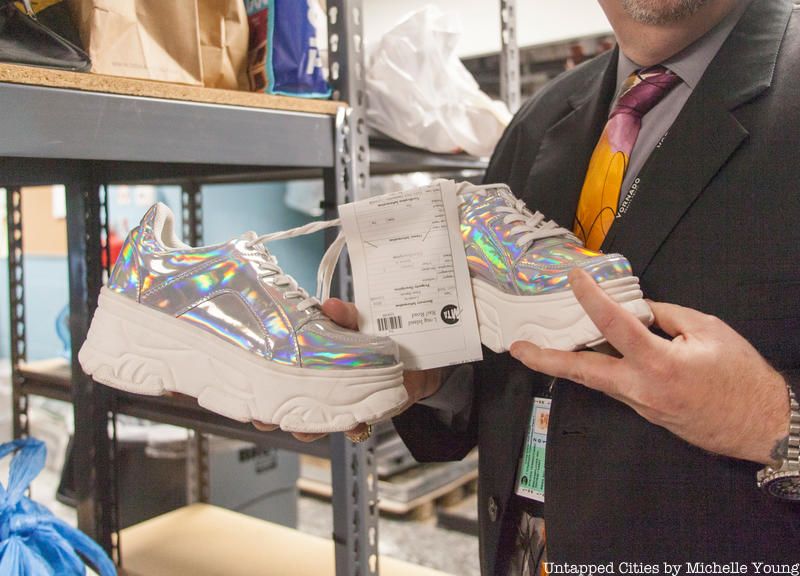
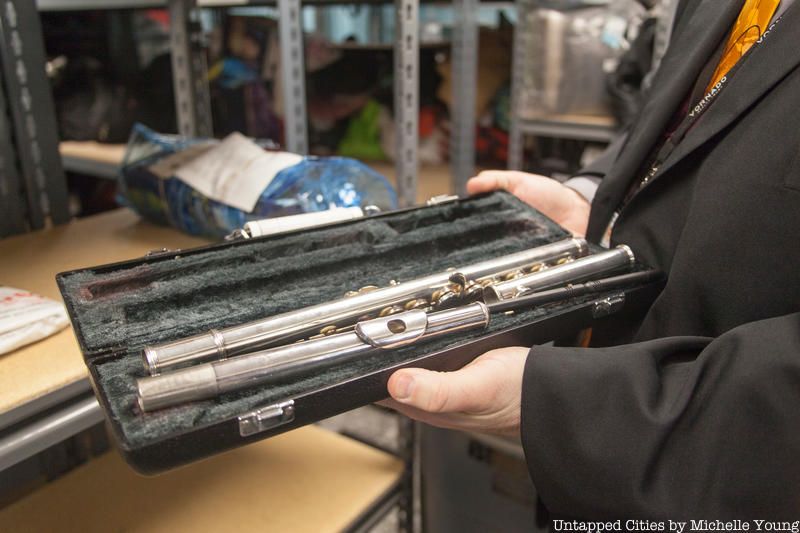
The small items — like phones, wallets, keys, medication, and glasses — are kept in blue bins near the customer service desk. When you first enter the back, you’ll find rows of suitcases, purses, and backpacks. The Lost & Found is required by state law to keep things for 90 days, after which the items are bought by a third-party, but the Lost & Found can keep high value items for up to three years. If a credit card is discovered in a wallet, the staff will try to call the credit card company and see if they are willing to notify the owner. Terracciano says the most important thing to remember when reporting a lost item is to provide a lot of detail, the more the better so the staff can locate something definitively.
Hopefully you won’t have a reason to stop by the LIRR Lost & Found, but if you do, know that it’s a tight ship that’s being run.
Join us for an upcoming tour of the Remnants of Penn Station, where you’ll get to see elements of the train station revealed in the recent construction:
Tour of the Remnants of Penn Station
Now, see what treasures people leave on Metro-North with a peek into the lost and found facility at Grand Central Terminal!
Subscribe to our newsletter